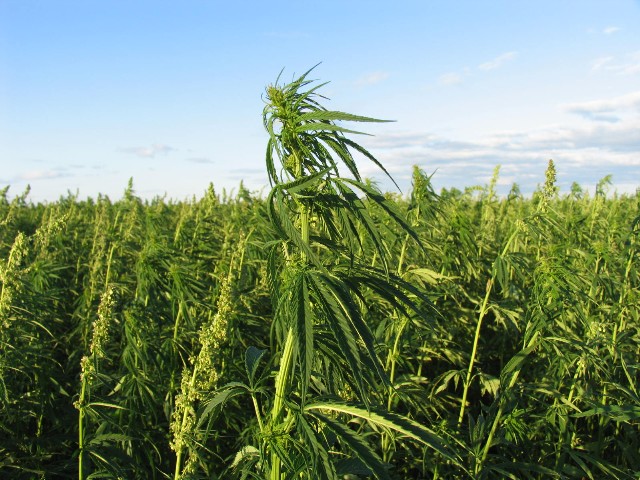Hemp has the potential to change many aspects of our melting world. So, why hasn’t it yet? What’s the hold-up?
The hemp industry is facing a sharp downturn at the moment, and many farmers don’t see a future growing the crop, at least right now. The CBD industry is facing over-saturation, over-regulation imposed by the Farm Bill, and a price collapse that’s impacting the entire market (just like California’s cannabis industry!). On the other side of the spectrum, the industrial hemp market can barely get off the ground due to the burdensome regulations and a lack of market depth — the latter pointing to a greater issue around funding, or lack thereof. Thus, the farmers in both hemp markets are struggling to figure their next moves.
For context, the Farm Bill made hemp legal in the US in 2018. We were knee-deep in the CBD craze back then, and farmers rushed to grow hemp to produce more of the cannabinoid du jour. Flashforward four years and hemp producers are scrounging for other ways to utilize their crops beyond CBD. One would think it’d be as easy as processing that hemp into other industrial goods. But the industrial hemp market isn’t operating at a fluid pace yet. Currently, hemp processing facilities in the US are scarce — In 2020, New Frontier Data said there were no more than 10 in the country — and supply chains are difficult to link together, signaling the embryonic nature of the market. All of this is deterring many hemp farmers from pursuing future harvests.
“The market can only bear so much CBD. That’s why it’s busted,” said Justin Eve, a farmer and hemp grower from Sutter County, California, who serves on the state Industrial Hemp Advisory Board, to Ag Alert. “But the market can bear livestock feed, textiles, clothing, oil, and paper products.”
Tom Pires, a Kings County, CA, farmer who manages a cotton gin in Riverdale, CA, is experimenting with a hemp supplier to create hemp fiber. His goal, according to Ag Alert, is to grow hemp for seed to get the best varieties and cultivars for the San Joaquin Valley, then get farmers to grow hemp for fiber.
Access to reliable seeds is key for growing healthy plants and producing quality hemp products. But great seeds only come from excellent genetics. Researchers in the US are just starting to develop hemp seed genetics that deliver consistent crops, according to Pew Environment. The lack of dependable genetics and seeds, planting calendars, and replicable growing techniques are other factors inhibiting the market growth for hemp products.
Getting farmers to grow hemp for fiber and other industrial materials is an uphill crusade. Pires told Ag Alert that he’s looking for contracts and buyers willing to pay some costs upfront. Why? Because farmers need a safety net in order to grow hemp in the current market. Greg Tesch, a Kern County farmer, says he will not grow hemp again unless he does so on contract. “We are farmers; we like to gamble, but there’s no more gambling in the hemp thing,” he said.
Farmers say that the framework outlined by the Farm Bill is rigid and borderline unbearable. Over-regulation is deterring farmers from growing hemp and, thus, stifling the market altogether. Besides various rules for planting, growing, and moving crops that farmers already follow, hemp growers are subject to hemp-specific requirements in state and federal law.
Under federal law, industrial hemp can’t contain more than 0.3% THC, the compound in marijuana that gets people high. Municipalities and counties are responsible for testing the crop for THC prior to harvest, and the crops that test above the legal limit are required to be destroyed.
“It makes it really difficult for the grower,” said Lisa Herbert, Sutter County Agricultural Commissioner, to Ag Alert. “They have their CDFA program that they’re responsible for; that’s all the laws and regs. But then the county can put additional restrictions or fees on them.”
The lack of supply chain and established markets for the industrial hemp industry leaves little to no incentive for farmers to withstand the federal, state, and local regulatory hoops. Derek Azevedo, executive vice president of Bowles Farming Co. in Merced County, CA, planted an experimental crop in 2019 to see if hemp would be a good fit for the operation. Azevedo said he learned the industry was too undeveloped and the markets for the crop were too undefined. He said the risk was too big, so the farm never went further.
“A lot of folks would be less likely to take a flyer on hemp today,” he said because crop pricing is higher, and input costs are far more expensive. “You’re risking more chips on the table today.”
Growing hemp for CBD still remains the most lucrative avenue for farmers interested in cultivating the plant. Not only are there buyers, but processing facilities and supply chains are stable features of the industry. The industrial hemp market is nascent and the financial support — let alone ROI — simply isn’t there yet. As the industry matures, and hemp processing facilities and supply chains emerge, farmers expect this to change.
“That’s where we need to be for the hemp industry,” Azevedo said. “We’re getting closer to that point.”


